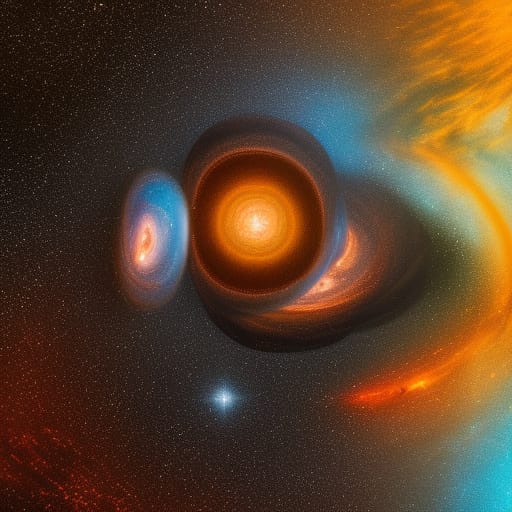Space: Black Hole

A black hole is a region of spacetime exhibiting such a strong gravitational force that nothing, not even light, can escape from it. Black holes are formed from the remnants of massive stars after they have exhausted their nuclear fuel and undergone gravitational collapse. Here are the important aspects of black holes:
Formation: Black holes are created when a massive star (with a mass greater than approximately three times the mass of the Sun) reaches the end of its life cycle. After the star has burned through its nuclear fuel, it can no longer support itself against gravitational forces and collapses, ultimately resulting in a black hole.
Event horizon: The event horizon is the boundary that defines the black hole, often referred to as the "point of no return." Once an object crosses the event horizon, it cannot escape the black hole's gravitational pull and is inevitably drawn towards the singularity at the center.
Singularity: At the center of a black hole lies the singularity, a point of infinite density where the laws of physics break down. The singularity is an extremely small and infinitely dense region where spacetime curvature becomes infinite.
Types of black holes: Black holes can be classified into three main categories based on their mass: stellar-mass black holes, intermediate-mass black holes, and supermassive black holes. Stellar-mass black holes are the most common and are formed by the collapse of massive stars. Intermediate-mass black holes have masses between those of stellar-mass and supermassive black holes, and their formation process is still not well understood. Supermassive black holes, which have masses ranging from millions to billions of times the mass of the Sun, are found at the centers of most galaxies, including our Milky Way.
Gravitational waves: When two black holes merge, they release a significant amount of energy in the form of gravitational waves. These ripples in spacetime were first detected by the LIGO and Virgo observatories in 2015, confirming a major prediction of Albert Einstein's general theory of relativity.
Accretion disk: When a black hole is surrounded by matter, such as gas or dust, the matter forms an accretion disk around the black hole. As material in the disk spirals inward, it becomes superheated and emits radiation, making the black hole visible in the form of X-rays or other high-energy radiation.
Hawking radiation: According to theoretical physicist Stephen Hawking, black holes can emit a form of radiation known as Hawking radiation. This radiation is the result of quantum effects near the event horizon, where particle-antiparticle pairs are created, with one particle falling into the black hole and the other escaping. This process causes the black hole to lose mass over time and eventually evaporate.
Time dilation: Due to the immense gravity of a black hole, time dilation occurs near the event horizon. According to general relativity, time moves more slowly for an observer close to a massive object compared to an observer farther away. This means that, from the perspective of a distant observer, an object falling into a black hole would appear to slow down as it approaches the event horizon, eventually appearing to freeze in time.
Tidal forces: Black holes exert extremely strong tidal forces due to their intense gravity. These forces can cause objects that get too close to the black hole to be stretched and compressed, a process known as "spaghettification."
Exploration and observation: Black holes cannot be directly observed because they do not emit or reflect light. However, astronomers can detect black holes indirectly through their effects on the surrounding environment, such as the motion of nearby stars, the emission of radiation from accretion disks, or the detection of gravitational waves from merging black holes. In